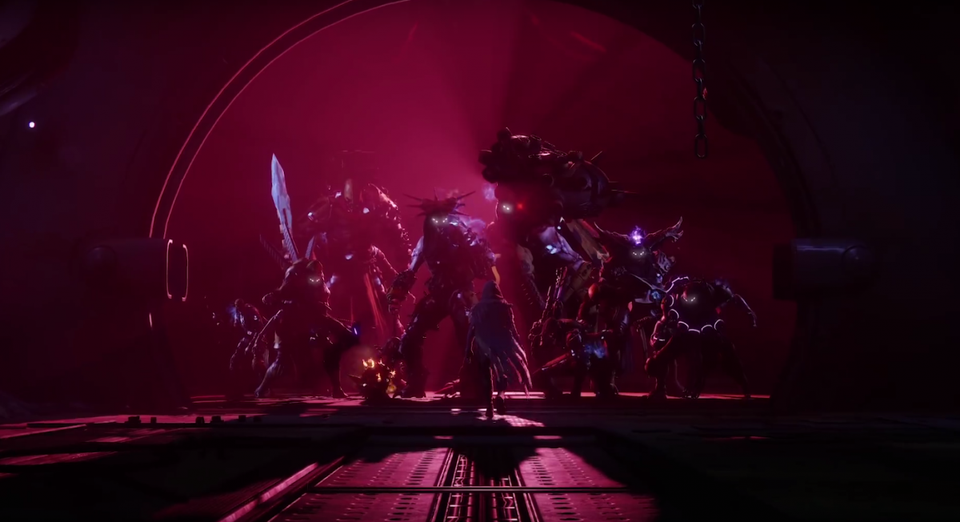The Engrams in 'Destiny 2' Have A Hidden Meaning

No matter what I do, I can’t separate my scientific background from my day-to-day life. What natural forces could make the planets of Star Wars? What is Thanos’ gauntlet made of in the Avengers movies, and where the heck did all that vibranium come from?
Destiny 2 – a videogame I’ve certainly sunk more than a few hours into since its launch last year – is about to be massively expanded with the Forsaken update this week, and there’s no doubt it’ll induce a similar degree of scientific ponderings. In fact, it already has; specifically, on those items known as “engrams”.
Within the Destiny universe, engrams are collectible packages that you get for leveling up, defeating powerful enemies or completing quests as you zip around the Solar System and just beyond its outer margins. You don’t know what’s inside them until you take them to someone that can decrypt them, after which weaponry, armor or even a brand-new anti-gravity vehicle will reveal themselves.
As it happens, the term engram isn’t a Bungie invention. It’s a term used in neuroscience, and one that’s rather appropriately surrounded by plenty of scientific intrigue itself.
At present, precisely how memories form, how they are stored and how they are accessed is proving to be extremely difficult to pin down. A recent paper, which suggests that a protein that influences memory in the brain might have come about due to an ancient infection by a viral precursor, highlights that nicely.
What is known, however, is that there must be some biophysical and biochemical process that occurs in the brain that allows us to remember things, albeit imperfectly. A 2016 review on the subject brings together leading experts from various disciplines to explain what they suspect the mechanisms for memory are.
It begins by noting that more than a century ago, Richard Semon – a German zoologist and evolutionary biologist – was fascinated by the topic, and came up with an idea of his own. Calling it “organic memory”, he suggested that memories are passed on down through generations via certain cells. Specifically, he thought that changes in the brain that occur when memories form are inherited, and he named those changes “engrams.”
We now know this not to be true, thanks to advances in genetics and neurobiology. The term engram nevertheless stuck, and it’s still used today. It still means, per that review, “lasting connections in the brain that result from simultaneous ‘excitations’.”
When you learn something, a small group of brain cells activates, and they permanently change. Recall cues, like smells, sights, sounds, a conversation or just revisiting the physical location in which the memory took place, reactivates these cells. This allows us to retrieve the memory.
These engrams are representative of memory traces. It’s not clear how memories themselves form, nor what precise physical changes take place and how these relate to memory storage. It is, however, increasingly clear that it has something to do with these collections of physical alterations in your brain.
An article over at Scientific American describes what these lasting connections are in relation to memory. When you think of anything – say, the first time you ate a certain kind of food – you don’t just remember this even as an isolated incident. You quickly remember things around it, like you’re flicking backwards and forwards in a book, with that one gastronomical memory being just one single chapter. That’s because memories aren’t like single treasure chests in your brain, but like multiple points on a spider web, all interlinked with other such points to varying degrees.
The presence of such engrams was strongly hinted at back in the early-1900s, when Canadian neurosurgeon Wilder Penfield was operating on epilepsy patients. As explained by MIT News, he removed parts of the brain where seizures appeared to begin.
In order to make sure only those antagonizing neurons were removed, he electrified various brain segments and asked the anesthetized-but-conscious patients what they felt. Even with a handful of neurons being stimulated, the patients began to remember past events quite clearly, which suggested that memory wasn’t just an intangible concept, but one rooted in neurophysiology. Over time, the existence of these memory networks, these engrams, became clearer.
There are engrams for different memory types. One of the contributors to that review paper notes that the hippocampus – a key brain region for memory formation – seems to be home to plenty of engrams linked to spatial recollection, those linked to directionality and the layout of various environments.
It’s also where episodic memories, those involving personal experiences and their related contextual information, are forged. Although it was thought as late as 2016 that these memories were then transferred to the prefrontal cortex for long-term storage, a 2017 study revealed that copies already seem to exist in that part of the brain too. It seems that, from the point of engram formation, those in the hippocampus “fade” over time as those in the prefrontal cortex are reinforced.
In the last few years, teams of scientists have been able to trace the development of engrams in mice. Not only that, but by genetically modifying neurons to react to beams of light, they have been able to artificially make mice remember something specific by essentially shining a very fine torch on selected engrams. This technique – optogenetics – has allowed them to even create false memories in mice.
Source: https://www.forbes.com